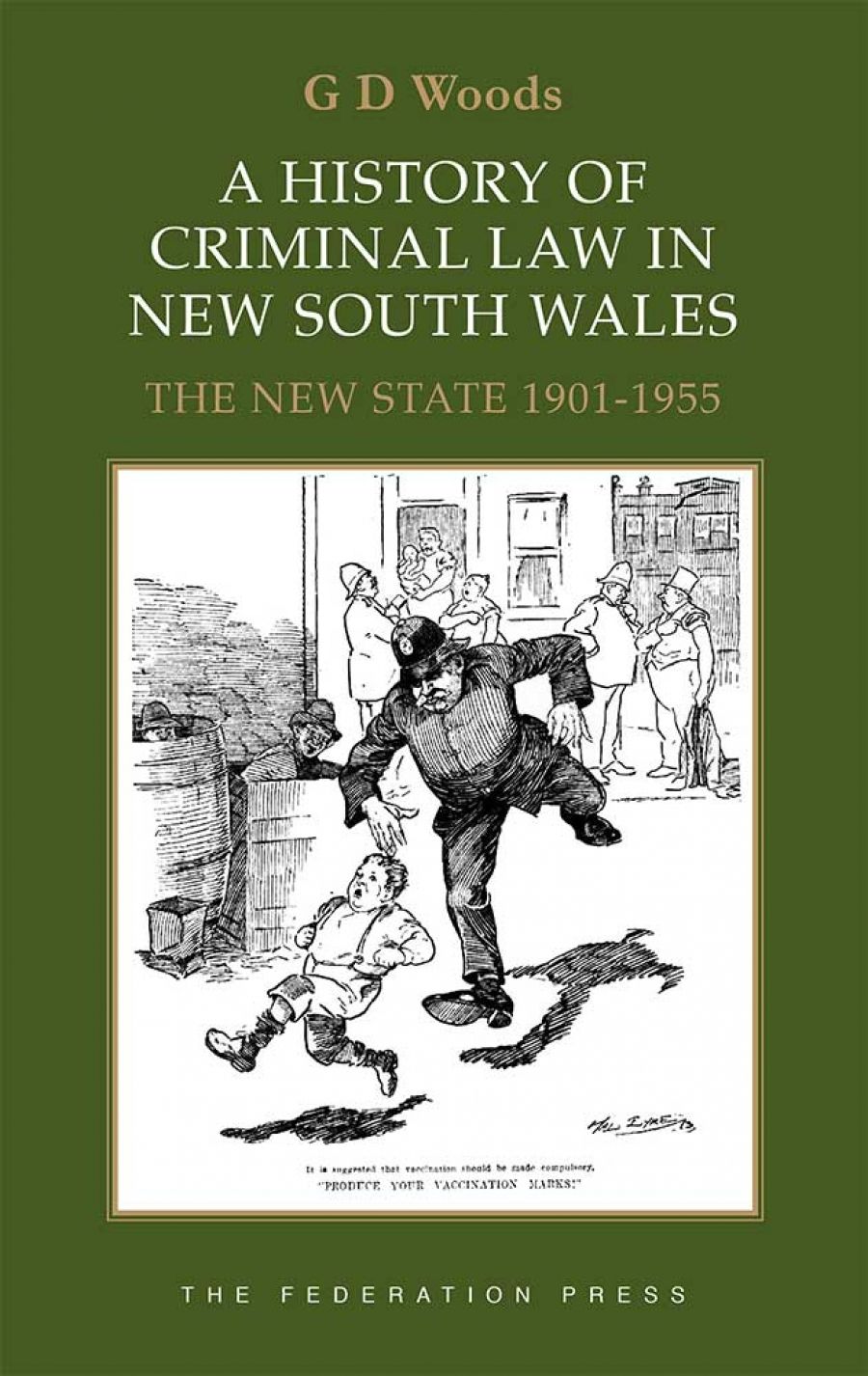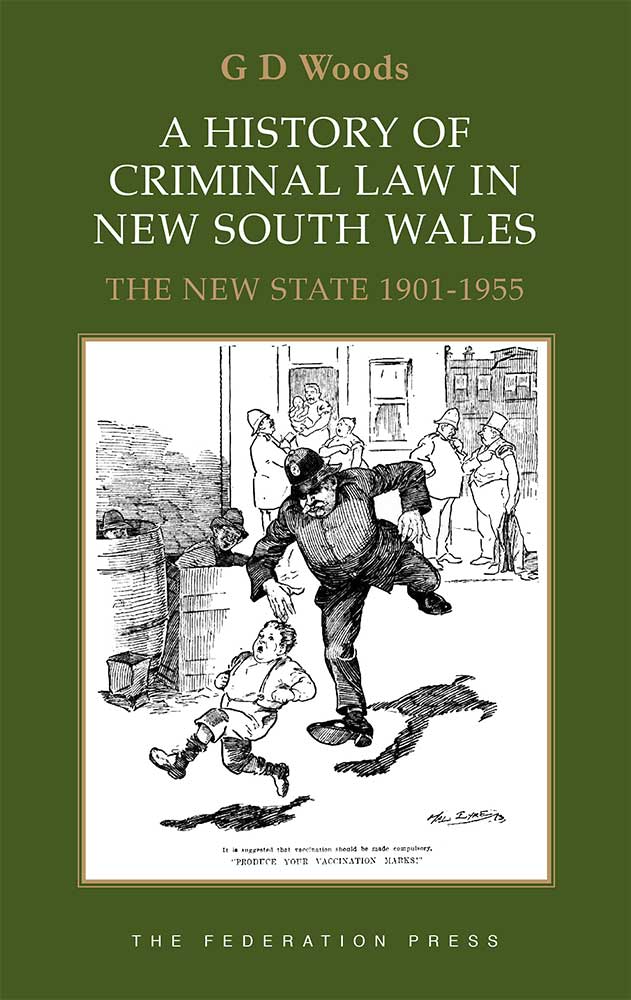
- Free Article: No
- Contents Category: Australian History
- Review Article: Yes
- Article Title: Peculiar Mercy
- Online Only: No
- Custom Highlight Text:
If economics is a ‘dismal science’, criminology may be considered a hopeful one. Its deepest roots are to be found in the ideas of the Enlightenment, particularly the belief in progress and the improvement of human nature. It probably occurred to very few of those sweating aboard the twelve filthy transports that sailed into Sydney Harbour in January 1788 that they were the first participants in an extraordinary social experiment in which viciousness, legal principle and mercy were to be held in constant tension.
- Book 1 Title: A History Of Criminal Law In New South Wales
- Book 1 Subtitle: The Colonial Period 1788-1900
- Book 1 Biblio: Federation Press, $69.50 hb, 480pp
- Book 1 Cover Small (400 x 600):

- Book 1 Cover (800 x 1200):

When we think of the beginnings of colonial Australia, most of us have etched into our tribal consciousness an image of brutalised convicts. Rum, sodomy and the lash were not a monopoly of the Royal Navy. Dr Greg Woods, however, has the perspicacity to see beyond the received wisdom. In his introduction, he observes: ‘The improbable colonists were … banished halfway around the globe because the English legal system of the day could not bring itself actually to execute the vast numbers of criminal offenders qualified to be sentenced to death by the courts.’ Of the 788 convicts in the First Fleet, one third had been sentenced to death. Thus transportation was ‘a peculiar sort of mercy’.
It is a small misfortune that Woods did not find a racier title for his excellent book, because without one I suspect it will not find the readership it deserves. Woods, a District Court Judge in Sydney, has been a senior barrister and a gifted law teacher. His lectures were marked with intelligence, wit and humanity as well as depth of scholarship. All these traits are evident in this monograph, as well as his deep understanding, from the inside, of the criminal justice system.
The book is built around the themes of savagery within the justice system; the entrenchment of the rule of law and the development of legal principle; and the discretionary application of clemency within the criminal law. Early on in the piece, Wood warns the reader that he will focus on the law relating to murder, rape, assault and theft, and essential doctrines and procedures relating to criminal trials. Dry as the prospect of reading a further 400 pages appears to be at that point, it is a misleading impression. Wood brings this apparently dense and unpromising topic to life by employing a series of vignettes, anecdotes and case studies that reveal the peculiarities, not only of the law itself, but of colonial judges, lawyers, politicians, administrators and criminals in all their hideousness and glory; and he does so with both gravitas and humour. He remarks of Judge-Advocate Atkins, for example, that he ‘was to prove one of the most interesting judicial appointments in Australian history. A man who has both a serious drinking problem and the power of life and death over his fellows is almost bound to be a problem … he often failed to separate his drinking from his judging.’
The law-and-order debates with which we are so familiar at election times have been conducted, on and off, since the British first settled in Australia. They were then, as they are now, debates not so much about crime and punishment as about human nature and society. The rule of law means different things to different people. One side views the justice system as a bulwark against barbarians; the other, as an instrument of civilisation. From a determinedly liberal point of view, Woods sketches the ebb and flow of the underlying argument as white settlers strove to create a fully-fledged British community in a penal camp in the antipodes.
We have had no civil wars or revolutions to dramatise in folk memory the development of democratic institutions and the rule of law in Australia, but Woods’s account emphasises the reality of the sometimes heroic struggle. New South Wales was run for a generation either by a military dictator or, during the period of the Rum Corps, by a junta. Even after the establishment of the Supreme Court in 1823, and the formation of a rudimentary form of representative government in 1828, viciousness remained the norm in the penal establishments such as Van Dieman’s Land, Norfolk Island and Port Macquarie. When, on 1 January 1901, NSW joined the Commonwealth, its legal system was more principled, less savage and less erratic in its mercy than a century before, suggesting, as Woods implies, that the liberal, optimistic view of history is to be preferred to Hobbesian pessimism, but that such progress is hard-won and never complete.
Many of the questions and problems that still confront us in our legal system and the wider society exercised our forebears: whether judges are independent or answerable to politicians; corruption and bias in the legal system and in law enforcement; whether the emphasis in sentencing should be on punishment or rehabilitation (a particularly acute dilemma when a large proportion of the colony’s population were convicts and ex-convicts); the application of colonial law to the indigenous people and its effects on them; issues of fair trial procedures, especially in times of heightened alarm; miscarriages of justice; and civil liberties. Woods’s pioneering work (as far as I can ascertain, the first comprehensive history of this country’s criminal law in the colonial period) is not only an impressive piece of scholarship and a fascinating expedition into our past, but a service in placing our current controversies in their historical contexts.


Comments powered by CComment